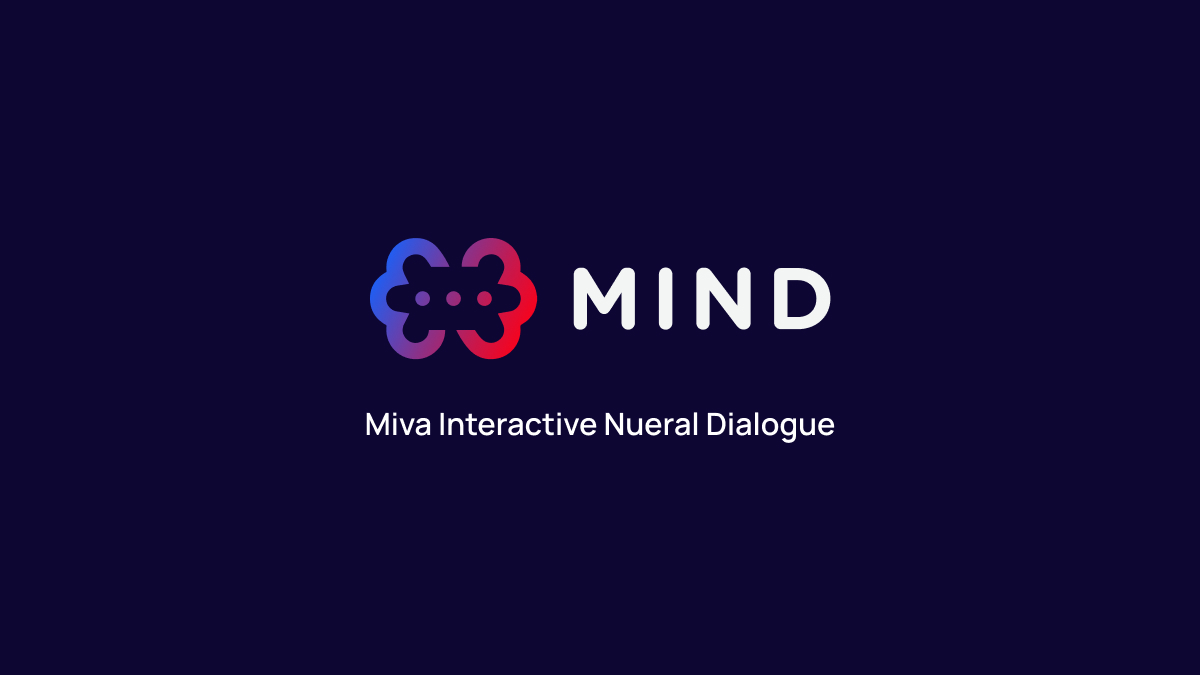For decades, passive learning has dominated the education landscape. But research continues to show that this method falls short in helping students truly understand or apply what they’ve learnt.
Research reveals that students retain only about 20% of material delivered through traditional lectures but retain up to 75% when they engage actively with the content.
This mismatch between perceived and actual learning is one of the key problems we set out to solve when we built MIND at Miva Open University.
At Miva, we believe that real learning goes beyond memorising facts or picking the right answer on a test. That’s why we built an AI tool designed to help students think more critically, communicate more clearly, and better understand complex ideas.
Powered by artificial intelligence, MIND simulates real conversations around case studies, giving instant feedback on how well students understand and explain what they’ve learnt. It’s a major step forward for AI in education.
What Is MIND?
MIND stands for Miva Interactive Neural Dialogue. It’s an AI tool that acts like a smart, supportive study partner. Instead of passively reading or watching videos, students at Miva now engage in real-time, voice-based conversations with MIND. These conversations test students’ thinking and help them build the skills that matter most in today’s world:
- Critical thinking
- Comprehension
- Communication
Through every case study interaction, MIND listens to students’ reasoning, challenges their responses, and helps them improve.
Why Did We Build MIND?
Too often, traditional testing and case study review processes are passive. You read, you submit, and you wait for a grade, but that doesn’t help you grow. We noticed that students needed more than just answers. They needed real-time feedback, opportunities to explore ideas, and a way to practise explaining complex thoughts under pressure.
So, we created the Miva Interactive Neural Dialogue to make learning interactive, personalised, and performance-driven. It’s not just another app. It’s an active learning experience shaped by the real needs of modern learners.
How Did We Design MIND?
We designed MIND with purpose. Over 136 case-study sessions—equivalent to 62 hours of real student conversations—we tested and refined how MIND responds to students’ voices, evaluates their reasoning, and supports their growth.
We used real MBA case studies, including topics like:
- Procedural fairness in workplace dismissals
- Pricing strategies in the airline industry
- Healthcare technology and insurance
- Civic technology for government accountability
- Organisational culture and leadership
What we found was clear: well-designed case studies, combined with smart AI, lead to deeper reflection, better understanding, and improved performance.
Why Do Students Need MIND?
Today’s students don’t just need facts; they need skills. The world is changing, and so are the demands of the workplace. With MIND, students practise how to think, reason, and speak clearly under time pressure.
Like a bridge, it helps students connect the dots between theory and real-world scenarios. As a student, you get a safe space to make mistakes, test ideas, and grow, all within a tool that feels like having a tutor in front of you.
What Does MIND Do for Students?
This AI tool gives students:
- Voice-based, interactive learning — like a real conversation
- Instant, automated scoring — no waiting for feedback
- Personalised academic support — tailored to individual responses
- Skill development — in real-world reasoning, not just textbook answers
And because it contributes to their CGPAs, students’ work with MIND isn’t just practice; it’s part of their academic performance.
What Impact Does MIND Have on Students?
The results from our pilot were powerful:
- Students engaging with legal and policy cases had the deepest thinking — averaging over 20 back-and-forth responses with MIND.
- Cases with strong numerical content (like pricing strategies) saw repeat use of over 50%, with students returning to test different “what-if” scenarios.
- Learners reported greater clarity in their reasoning and more confidence in defending their ideas.
Even the timing of use revealed habits. Most students preferred using MIND in the evening to reflect and refine, while early mornings were popular for quick, goal-oriented practice.
In short, MIND helps students engage more deeply, learn more effectively, and think more clearly.
We’re Walking in the Future of AI in Education
More than just jumping on a tech wave trend, Miva is using AI tools to solve real problems in how students learn. Passive methods may still have a place, but they’re not enough. There’s more, and learners today need tools that push them to think, question, and grow.
That’s exactly what we’re doing.
By turning static case studies into dynamic conversations, MIND is helping students build the skills that matter, from critical thinking to confident communication.


